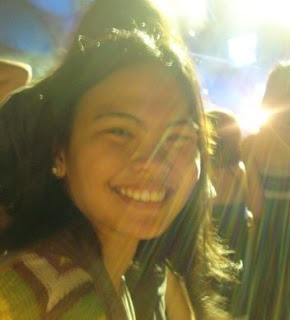In line with the Aim High Pinay Campaign of Modess, the National Commission on the Role of Filipino Women (NCRFW), in cooperation with Women's Feature Service and Bridges@Com, launched a story contest inviting all women (teens, single young females, adults) to share stories of their own lives, or of other women they know who have exemplified the philosophy of Aim High Pinay.
On March 11, the Philippine Daily Inquirer published the paper submitted by Mary Rachel Reventar, a resident member of The UPLB Genetics Society. Reventar wrote about the Hope Intervention where she spearheaded an outreach program for the organization called “One Gene: One Child”. Later, Reventar was appointed as the Hope Outreach Committee Head. She has also served the organization's Editor-In-Chief for AY 2006-2007.
On March 11, the Philippine Daily Inquirer published the paper submitted by Mary Rachel Reventar, a resident member of The UPLB Genetics Society. Reventar wrote about the Hope Intervention where she spearheaded an outreach program for the organization called “One Gene: One Child”. Later, Reventar was appointed as the Hope Outreach Committee Head. She has also served the organization's Editor-In-Chief for AY 2006-2007.
The Aim High Pinay Campaign aims to raise a higher level of consciousness for women to seek ways to further improve themselves, to do more and achieve more.
Below is an excerpt of the article.
MANILA,
Philippines—Filipino women are set for larger possibilities
in life. They do not just settle for whatever comes their way, but they
tackle what they believe will give them a greater purpose. For example,
Mary Reventar and Catherine Untalan have achieved much at a young
age.
Autism advocate
Mary Rachel P. Reventar
UP
Los Baños Genetics
Society member
e-mail rachelreventar@yahoo.com.ph
I am a member of the UP Los Baños Genetics Society (GeneSoc).
We hold
four tutorials every semester about genetics. We do genetics symposia,
quiz contests, and exhibits. We hold an annual Genetics Camp to promote
the science of genetics among high-school students.
But there was a time when I thought we should be doing more. It
was
then that GeneSoc got involved in autism. There’s actually no cure for autism yet. I’ve been aware of
this
disease since I was very young. Movies about autistic children intrigue
me and I’ve always thought that I would grow up helping them.
I also know that the first and only public autistic school,
Hope
Intervention center, is in Calamba City, where I live. It’s composed of
47 children diagnosed with autism and some with Down’s Syndrome, mental
retardation and cerebral palsy. In industrialized countries one teacher
is dedicated to teach one special child.
In Hope Intervention, there are only nine teachers and some
volunteers. I wanted to change that, so members of the society took
turns in taking care of the children. We named our program, One Gene:
One Child-Hope Intervention Outreach.
This year, I was given my own committee, One Gene: One Child.
The
project put up donation boxes and raised small funds for our jeepney
ride. But I thought we needed to do more and think beyond UPLB. I
e-mailed
several bookstores, toy stores, publishing houses and several agencies,
telling them about the school and asking for donations. A new public library has been constructed adjacent to Hope
Intervention. It will have books about autism and children’s
literature.
Out of the scores of e-mails I’ve written to so many people, a
few
have answered and offered generous donations. Somebody pledged a benefit
concert by the end of this year for our special children.
Everything came as a blessing to us really. We never expected
that
things would be bigger than ourselves.Fact was, the children at Hope Intervention Center, wouldn’t be
able
to express to us their thanks, they simply couldn’t. But I think that’s what’s so special about this project—it’s
really
just about helping out.
So I’ve decided to continue helping special children by
becoming a
doctor especially for them. Did you know that there are only 10
developmental doctors in the Philippines and only one of them is in
Laguna?”








0 Comments